At a recent get-together, law firm leaders cited today's talent crisis as the steepest challenge they're facing and are eager to know how they can best retain their top lawyers in the ongoing hot talent environment
Any gathering of law firm leaders will inevitably begin discussing what many are seeing as a crisis of legal talent in today’s marketplace. More specifically, many want to know why their firm is facing a potential wave of lawyers leaving now and over the next few years, and how law firms can better retain their key legal talent — and more importantly, why some firms are better at retention than others.
Not surprisingly then, a recent conversation with over 30 law firm managing partners from across the world, including Thomson Reuters’ CEO Steve Hasker, quickly moved on to the crucial question of talent. Using Thomson Reuters’ Market Insights research, we were able to form a much clearer picture about why lawyers are leaving, which firms are able to retain their talent, and why.
Lawyers looking elsewhere
The sheer number of lawyers considering moving on from their current firm is staggering. Our research indicates that 21% of client-nominated Stand-out Lawyers (mostly partners) and 46% of associates are Unsure, Somewhat Likely, or Highly Likely to leave their current firm within the next two years. In our discussion, the managing partners talked at great length about how their firms are feeling the strain that this challenge puts on already stressed practices. While clients have largely been shielded thus far, this pressure is leading to some tired teams and overworked professionals. Further, many of the managing partners talked about how the time and process to replace lawyers that leave has become much longer and more complex.
Indeed, several firm leaders in the discussion noted that they’ve seen a change in why their lawyers are leaving — while many firms have lost their professionals to competitors or to in-house positions, they are now increasingly seeing people move on with no plan at all.
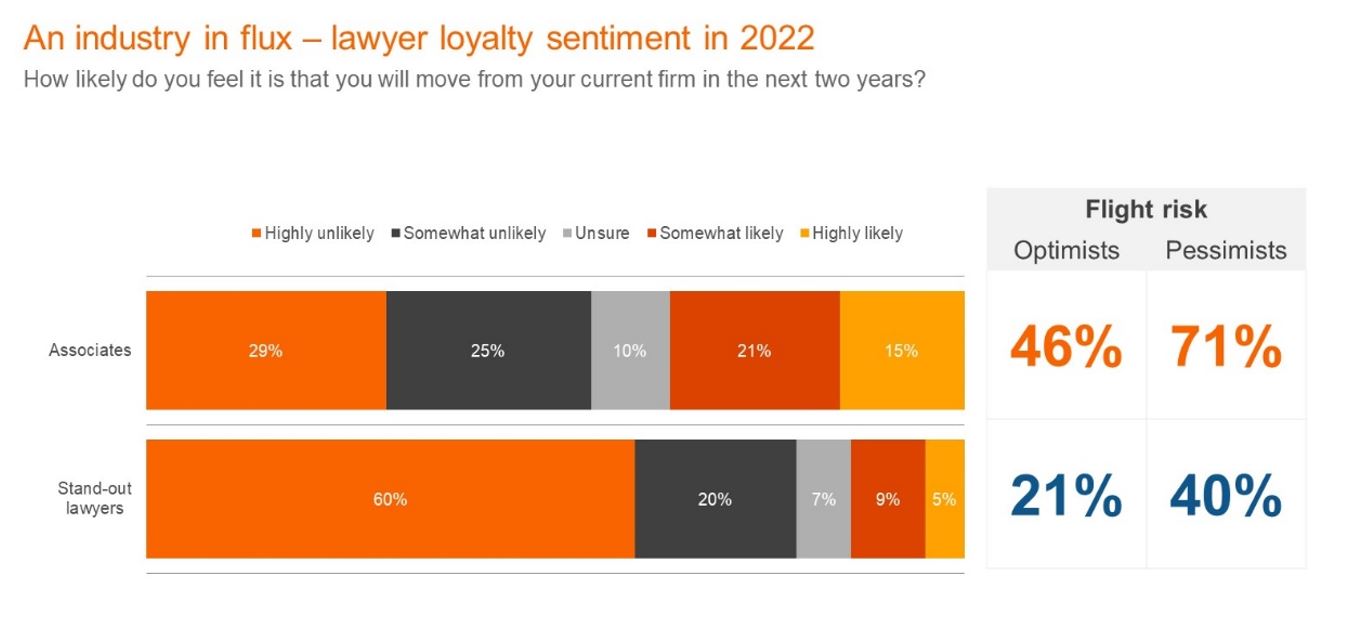
Looking to the recent “Stay or Go” report from the Thomson Reuters Institute, which explores the attributes of those law firms that have a history of retaining their talent and those who have not, shows that the Stay firms are historically able to retain their talent and even slightly improved their turnover rate in 2021 compared to 2019.
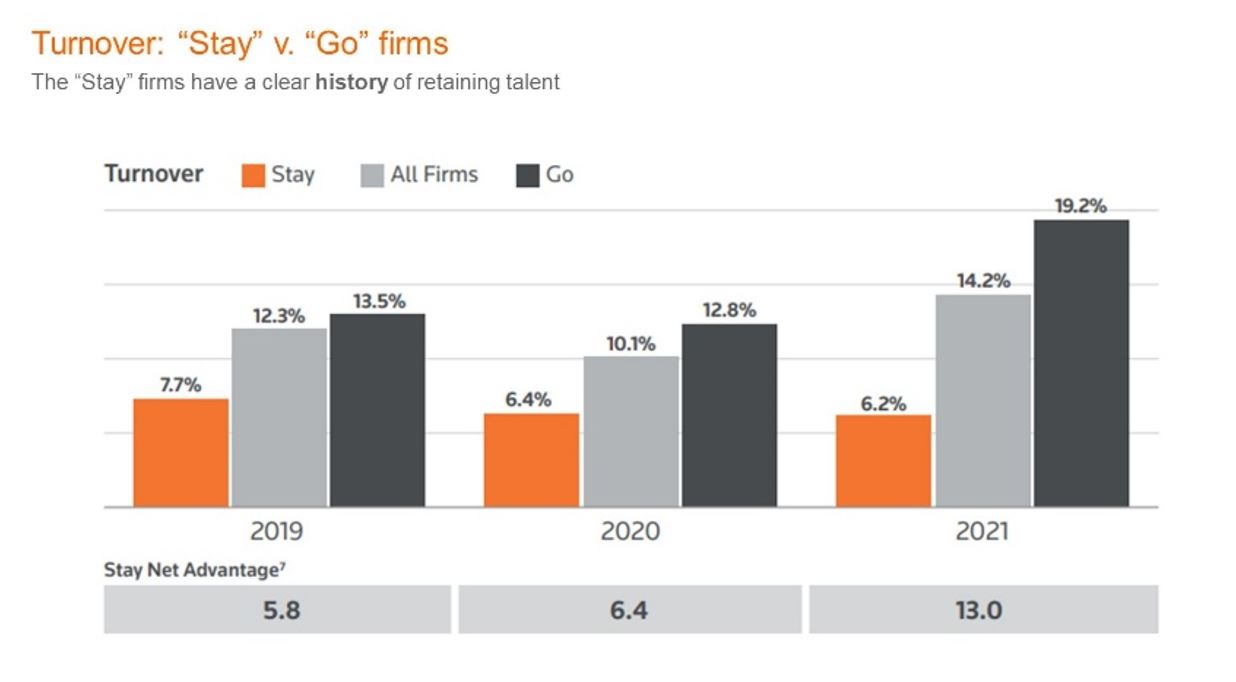
Now, this is where things get interesting. The Stay firms not only had historically higher billed hours per timekeeper, but they also managed their compensation in a much more sustainable manner.
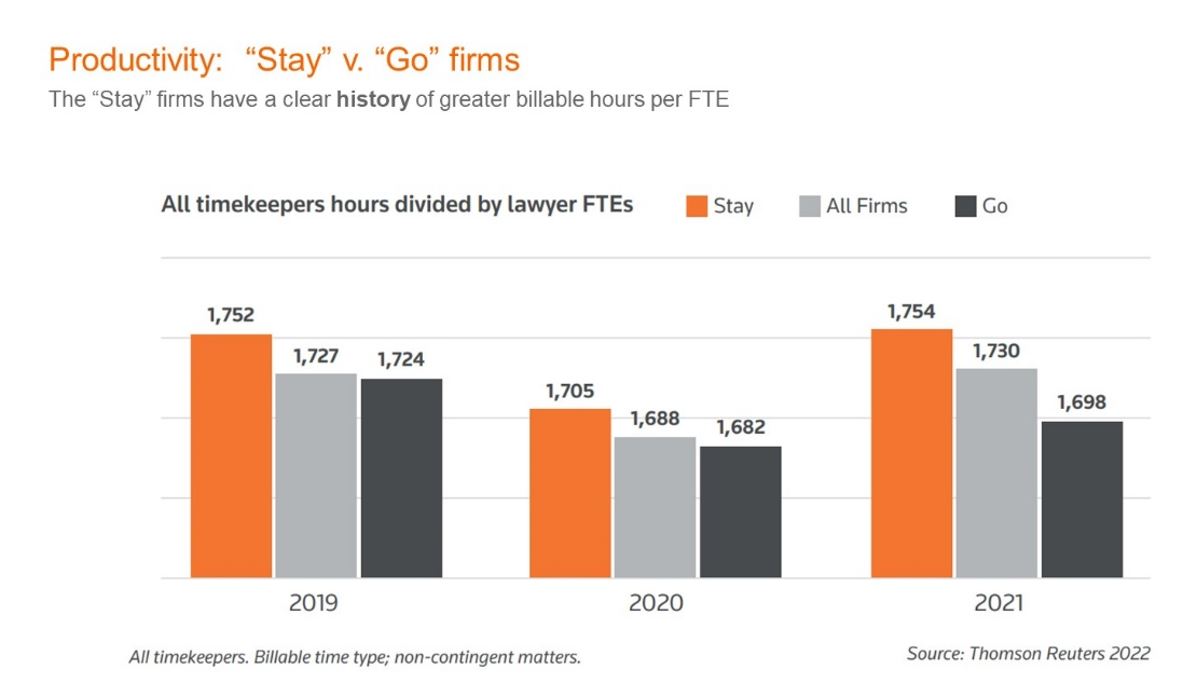
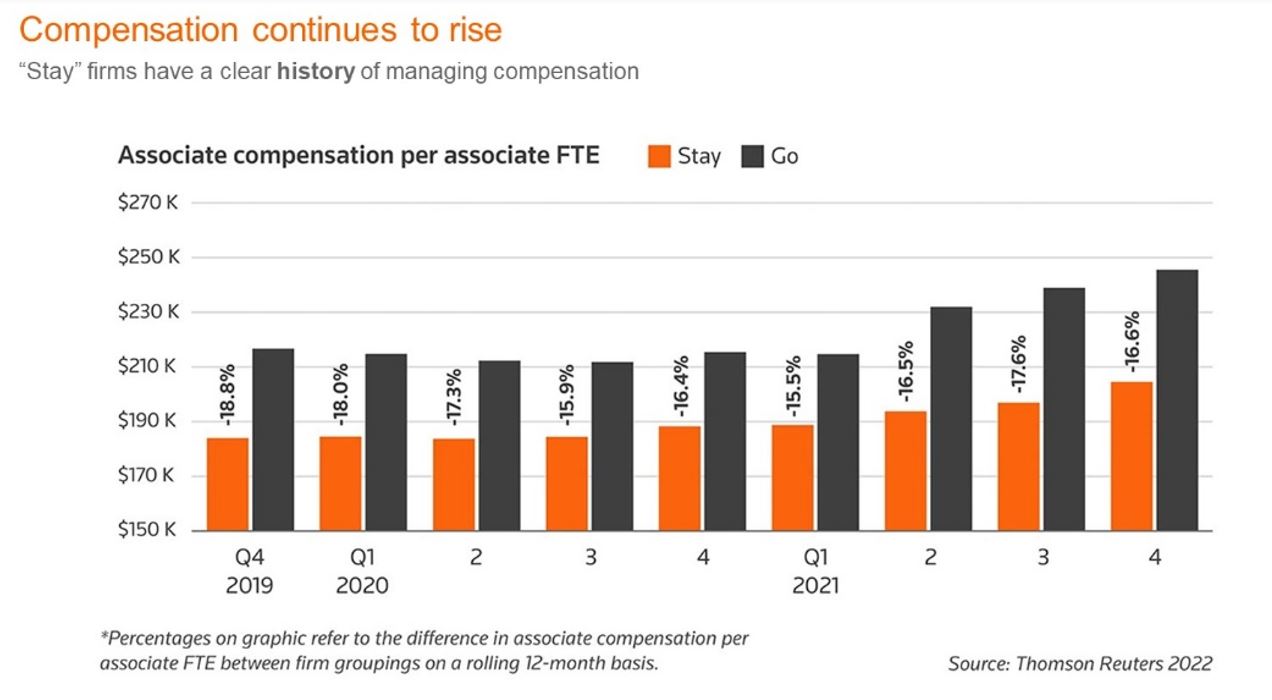 Clearly, the Stay firms have figured out the magic that not only retains their talent but keeps them busy, while continuing to achieve a sustainable pay rate. In essence, the Stay firm lawyers are highly engaged at their firms. When looking at the most engaged lawyers, there are very clear factors that they have told our Thomson Reuters researchers that they like about the firms for which they work, namely: People/Colleagues, Culture, Quality of Work, Collaboration, and the Firm’s Values. All these engagement factors are linked to the quality and ability of firm leadership and the depth and inclusiveness of the firm’s culture.
Clearly, the Stay firms have figured out the magic that not only retains their talent but keeps them busy, while continuing to achieve a sustainable pay rate. In essence, the Stay firm lawyers are highly engaged at their firms. When looking at the most engaged lawyers, there are very clear factors that they have told our Thomson Reuters researchers that they like about the firms for which they work, namely: People/Colleagues, Culture, Quality of Work, Collaboration, and the Firm’s Values. All these engagement factors are linked to the quality and ability of firm leadership and the depth and inclusiveness of the firm’s culture.
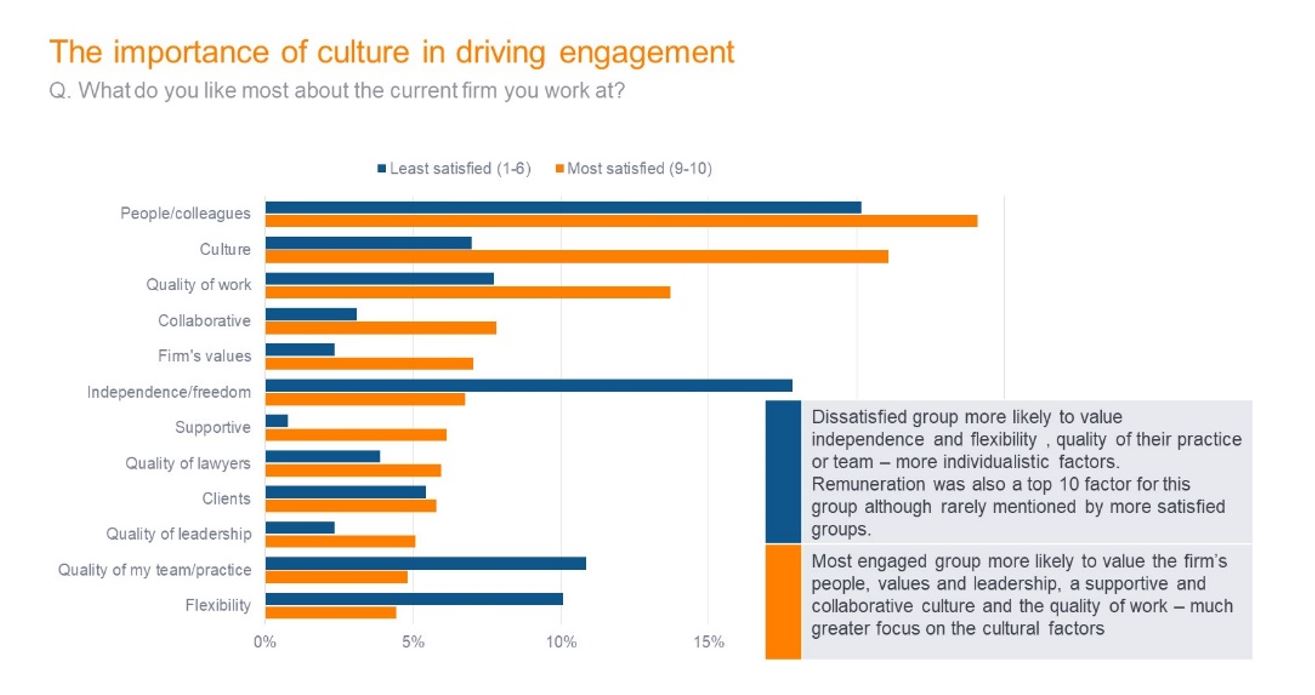
Finding the best path to retention
Discussion of this data among our managing partner group led them to reflect on the best practices in which firms could engage to keep their own lawyers satisfied and staying at the firm. Almost immediately, the group agreed that the pandemic and remote work had made it much harder to engage with younger professionals within the firm.
For example, remote work made mentoring — and especially those more difficult career-shaping conversations — different and more challenging. Even those younger professionals who would have historically been on a good growth track are now questioning their path to a great degree. This means that now, law firms are having to “sell” the idea of partnership like never before. Indeed, several law firm leaders on the discussion noted that their lawyers are more critical of how they are spending their time now, and in particular, those with long commute times are more reluctant to sacrifice large parts of their day on travel.
Firm leaders noted that firms generally have become more flexible with how they allow their lawyers to work, although this looks different across geographical jurisdictions. For example, some firms have pursued a hybrid model whereas others have successfully mandated an in-office presence, with flexibility on Fridays. Those firms that have not mandated in-office presence are not seeing the return-to-office environment at the level they’d like, so they are trying to incentivize in-person work through free food, coffees, and social events, several leaders explained.
Managing partners also acknowledged that the full effect of the pandemic and remote working and how it affects associate development likely won’t be known for some time.
Yet, in another sense, the pandemic and the move to remote working carried some benefit because it improved law firms’ ability to communicate internally, and allowed for greater consistency between offices because of the resulting breakdown of geographic barriers and silos that naturally occur in an in-person environment. Not surprisingly, the managing partners also acknowledged that the full effect of the pandemic and remote working and how it affects associate development likely won’t be known for some time.
Another theme that reoccurred in the discussion was that lawyers need a sense of purpose that’s linked to the work they do in order to become highly engaged. Progressive law firms are involving associates in conversations that are shaping their firm’s culture and values, and are helping associates find their best fit and purpose by rotating them among different practices and mentors. In fact, several law firm leaders on the discussion said they were seeing an increasing need for transparency on how their younger lawyers can advance their career growth into partnership or leadership roles.
One area on which the managing partners did not come to a consensus on was who in the law firm is responsible for lawyer retention. There are many resources that are accountable for recruiting, but it was not so clear who was responsible for retaining lawyers. Indeed, lawyer retention is a relatively new phenomenon for law firms as, historically, lawyers have spent their entire career at the same firm. So, as firms begin tackling the lawyer retention question, defining who is responsible for lawyer retention is an important part of that question to answer. Interestingly, leaders emphasized the growing importance of the line manager in retention — a factor that has increased in the post-pandemic environment, with firms trying to encourage line managers to figure out what it is that their team members need and to ensure that those needs are being fulfilled.
The law firm leaders also reflected on the importance of spreading out the client relationship among many lawyers and other professionals within the firm to ensure that there are multiple points of contact between the firm and its clients. Thus, in the event that one lawyer leaves, the client relationship can be more easily maintained. In essence, the group noted, the fundamentals of account management are even more important during this ongoing war for legal talent.
As this vigorous conversation showed, strong leadership is key to retaining lawyers, preventing client disruptions, and preserving a firm’s culture.
You can gain a deeper understanding of how research can be applied to your firm, here.







